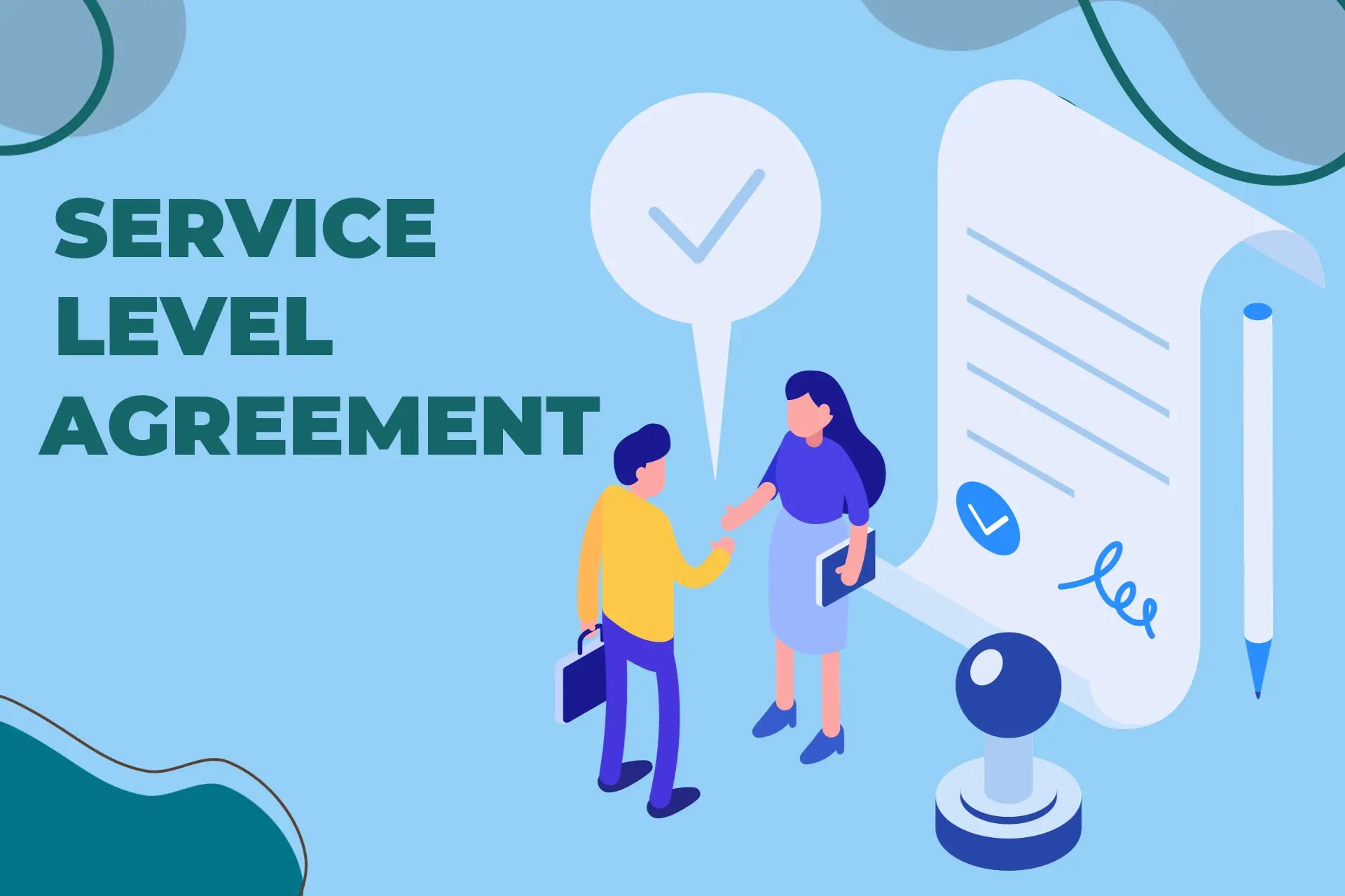
The Ultimate Guide To Crafting A Solid Service-level Agreement
Content
- What is a service-level agreement?
- Why do we need a service-level agreement?
- What are the essential elements of an SLA?
- What are the different types of service-level agreements?
- Best Practices for Crafting a Service-level Agreement
- Conclusion
Setting clear expectations at the onset of a business relationship is the best way to avoid disappointments later on. No one wants to be stuck with an arrangement that doesn’t deliver on its promises—especially companies depending on external suppliers for services or goods.
That is why most businesses rely on service-level agreements (SLAs) when dealing with vendors, service providers, or internal departments. It helps the customers explicitly communicate the performance, quality, and service levels they expect from vendors. In this manner, everyone is on the same page, and nobody can argue they were unaware of what they were getting into. How do you draft a solid SLA, you ask? Here is our in-depth guide to all things service-level agreements, covering everything from best practices to types.
What is a service-level agreement?
A service-level agreement is a contract that specifies the caliber of service that a customer and vendor agree upon. It outlines the level and type of service, performance metrics, rewards, and penalties. SLAs also help to dictate the roles and responsibilities of internal departments within a company.
These detailed agreements align the expectations of both parties to avoid ambiguities, miscommunications, and misinterpretations. Parties can ensure performance for the duration of the business agreement when expectations are explicit and well-stated. It lays the groundwork for penalties and legal action if the suppliers and vendors fail to do their part. SLAs are so commonplace that signing up for Google, Amazon, or Microsoft services requires them.
Why do we need a service-level agreement?
A customer has requirements and expectations when they approach a vendor or supplier. While these seem obvious, a clear record of all these rights, obligations, and service quality can help ensure everyone is on the same page for construction, healthcare, IT, HR, government, and telecom projects. SLAs provide a legal foundation for resolution during underperformance, failed deliverables, or disputes. The following are the benefits of a well-written SLA between consumers and vendors or among internal departments:
Define expectations
Service-level agreements specify what the customer expects from the vendor or supplier and how much commitment is required. They establish the level of service that the customer can expect, including performance metrics, response times, and availability. SLAs provide a transparent framework that enables both parties to understand their roles and responsibilities.
Quality assurance
Relationships between suppliers and customers break down when the goods or services aren’t up to par. SLAs help in maintaining and ensuring the quality of services. By clearly defining performance standards, SLAs serve as a benchmark for measuring the quality of services. It ensures that both parties are on the same page regarding acceptable service levels.
Risk management
Engaging with external suppliers opens up businesses to risks and uncertainties. That is why SLAs often include clauses that outline the consequences of failing to meet the agreed-upon service levels. These consequences can involve penalties or compensation for the customer or incentives for the vendors. It helps manage and mitigate risks associated with service disruptions or underperformance.
Performance monitoring
Vendor relationships require mechanisms for continuous improvement. SLAs enable organizations to establish key performance indicators (KPIs) that monitor and evaluate supplier performance. This data-driven approach allows parties to identify areas for improvement.
What are the essential elements of an SLA?
While SLAs differ based on providers and service categories, they all share certain fundamental elements. A thorough summary of the rights, responsibilities, and procedures for resolving issues must be part of every service-level agreement.
Overview
SLA begins with a clear introduction and overview. It defines the parties involved, the purpose of the agreement, and the scope of services covered. This section sets the stage for the rest of the document and includes party names, essential dates, and services.
Service scope
SLAs clearly outline the services and deliverables that suppliers or vendors must perform. The agreement defines the specific objectives and goals of the services. It ensures both parties have a shared understanding of expectations and requirements. This section helps prevent misunderstandings and sets the foundation for measuring performance.
Service-level metrics
Service-level agreements must detail the key performance indicators (KPIs) and metrics to measure the provider's performance. It could include response times, resolution times, uptime percentages, and other relevant benchmarks. Organizations can define the measurement criteria based on the service type to guarantee accountability.
Roles and Responsibilities
SLAs can help dictate the roles and responsibilities of suppliers and the client. They outline who is responsible for what tasks, communication channels, and escalation procedures. This section helps in establishing accountability and streamlining the workflow between the parties.
Service availability
Service providers usually must specify the expected service availability and any planned downtime for maintenance or upgrades. The SLAs also set up compensations for possible downtime. It enables clients to prepare for potential disruptions and ensures that providers are committed to maintaining optimal service levels.
Penalties and Rewards
SLAs specify penalties for failing to meet agreed-upon service levels and rewards for exceeding expectations. These could be financial penalties or incentives to align the provider's performance with the client's business goals. Moreover, clear consequences motivate the provider to meet or exceed the SLA requirements.
What are the different types of service-level agreements?
Today, a variety of SLAs are available to meet the unique requirements of diverse stakeholders and industries. Irrespective of the type and purpose, all service-level agreements establish clear expectations, responsibilities, and consequences in service-oriented relationships. Organizations can improve service quality and foster accountability by implementing any of the following SLAs.
Customer Service-level Agreement
A customer service-level agreement is one of the most common contracts between a service provider and its external customers. This agreement outlines the expected service levels, response time, resolution time, availability, and other relevant metrics. They are crucial for maintaining customer satisfaction and building trust. They typically cover uptime guarantees, issue resolution times, and penalties for failing to meet agreed-upon standards. In cases where third-party referrals or lead-generation services are involved, businesses may choose to implement a referral agreement contract that outlines expectations, compensation, and compliance standards alongside or as part of the SLA to ensure clarity and legal alignment between all parties.
Internal Service-level Agreement
An internal service-level agreement is a contract between different departments or teams within the same organization. They define the expectations and responsibilities of each internal service provider, ensuring performance and compliance throughout the arrangement. For example, an IT department might have an ISLA with the human resources department to ensure the timely resolution of technical issues for HR systems. These agreements help improve communication and collaboration between different parts of the organization.
Multilevel Service-level Agreement
A multilevel service-level agreement is a more complex arrangement that involves multiple parties and different layers of service providers. This type of SLA is often used in outsourcing scenarios where one organization acts as a primary and secondary service provider. Each level of service provider and customer has their own set of SLAs. The primary provider is responsible for coordinating and managing the overall service delivery. MSLAs are essential for ensuring that all parties involved meet their respective obligations to maintain the quality of service.
Best Practices for Crafting a Service-level Agreement
Organizations must craft a solid service-level agreement to maintain and improve client-provider relationships. SLAs must remain flexible and adaptable to accommodate evolving business priorities and client expectations. Here are a few best practices to craft and maintain a solid SLA:
1. Regularly review and modify SLAs
The business landscape is dynamic. Hence, organizations must ensure that SLAs align with evolving business objectives and industry standards. It involves revisiting SLAs at scheduled intervals or during significant changes in the business environment. During these reviews, stakeholders should assess whether the SLA still meets the organization's needs, identify gaps or areas for improvement, and incorporate feedback from both parties.
2. Define performance metrics
Clear and measurable performance metrics are the foundation of effective SLAs. Service providers and clients must collaboratively establish key performance indicators (KPIs) that align with their goals and objectives. These metrics should be specific, measurable, achievable, relevant, and time-bound (SMART). For example, if a service level pertains to response time, the SLA should specify the maximum allowable response time for different requests.
3. Set achievable goals
While it is essential to strive for excellence, SLAs should set realistic and achievable goals. Unattainable objectives can lead to frustration and dissatisfaction for the service provider and the client. Collaborative discussions can help strike a balance between ambitious targets and practical limitations. This approach fosters a positive working relationship and prevents unwarranted penalties or disputes arising from unrealistic expectations.
4. Cancellation conditions
SLAs aren’t meant for lifelong commitments. Hence, clearly outlining cancellation conditions is critical to a business arrangement. This includes specifying circumstances under which either party can terminate the agreement without penalty. Well-defined cancellation conditions protect the interests of both the service provider and the client and contribute to a transparent and fair partnership. In addition to specifying cancellation terms, SLAs should also address potential consequences, such as the return of data, the transfer of services to another provider, or any associated fees.
Conclusion
Service-level agreements are crucial for building and maintaining a healthy business relationship. A well-written SLA can specify and outline the rights, responsibilities, and obligations between service providers and clients or internal departments. It enables businesses to establish clear expectations and accountability in the arrangement.
However, SLAs must always be flexible to adapt to changing circumstances and business requirements. That is why regular reviews and updates to the SLA are essential to maintaining a dynamic and responsive document that evolves with the changing needs of both parties. Establishing KPIs provides a basis for monitoring and evaluating service performance objectively.
Book a Live demo
Schedule a live demo of Dock 365's Contract Management Software instantly.
.png?width=196&height=196&name=MicrosoftTeams-image%20(24).png)
Written by Deepti Gopimohan




